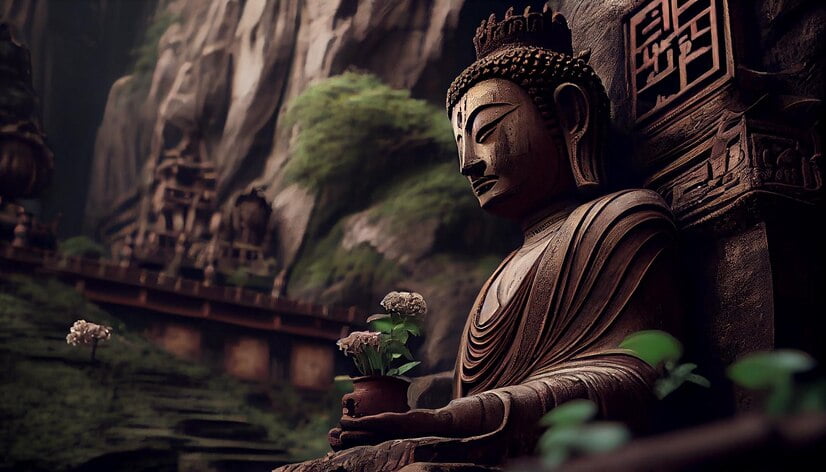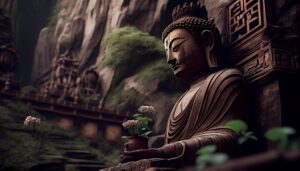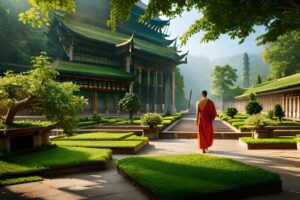Introduction:
Nestled in the serene embrace of the Himalayas, Dharamshala stands as a testament to the harmonious coexistence of spirituality, natural beauty, and cultural richness. This quaint town, situated in the Indian state of Himachal Pradesh, has gained global recognition as the abode of the 14th Dalai Lama, the spiritual leader of Tibetan Buddhism. In this SEO-optimized article, we will delve into the captivating allure of Dharamshala, exploring its spiritual significance, cultural tapestry, and the profound impact of the Dalai Lama’s presence on this enchanting hill station.
Section 1: **Dharamshala’s Spiritual Tapestry**
1.1 *The Origins of Dharamshala’s Spiritual Essence*:
Dharamshala’s spiritual journey traces back to the 19th century when it was established as a British colonial hill station. However, its true spiritual essence took root with the arrival of Tibetan refugees and the subsequent establishment of the Tibetan government-in-exile.
1.2 *The Presence of Monastic Institutions*:
The town boasts a vibrant monastic community with numerous monasteries, including the prominent Namgyal Monastery and Gyuto Monastery. These sacred institutions serve as centers for Buddhist teachings, meditation, and the preservation of Tibetan culture, creating an atmosphere of tranquility and introspection.
1.3 *McLeod Ganj: The Spiritual Heart of Dharamshala*:
McLeod Ganj, a suburb of Dharamshala, is often referred to as “Little Lhasa” due to its significant Tibetan population. Here, one can witness the fusion of cultures, with Tibetan handicrafts, prayer flags, and the aromatic waft of Tibetan cuisine permeating the streets. The presence of the Dalai Lama’s residence, the Tsuglagkhang Complex, further amplifies the spiritual ambiance.
Section 2: **The Dalai Lama’s Influence**
Whether winding through lush rainforests, crossing towering trestle bridges, or skirting alongside dramatic river canyons, passengers aboard the Rocky Mountaineer are treated to a visual symphony of colors and textures. Keep your camera ready to capture glimpses of wildlife, such as bears, elk, and bald eagles, as they roam freely in their natural habitat. From the glass-domed carriages, every angle offers a new perspective, inviting travelers to immerse themselves fully in the untamed beauty of the Canadian wilderness.India, a land of vibrant colors, rich history, and diverse cultures, has captivated the imagination of travelers for centuries. From the snow-capped peaks of the Himalayas to the sun-kissed beaches of Goa, from bustling metropolises to serene villages, India offers an unparalleled tapestry of experiences for every traveler. In this comprehensive guide, we delve into the enigmatic charm of India, exploring its cultural heritage, historical landmarks, natural wonders, and culinary delights.
### Unraveling India’s Cultural Tapestry
India’s cultural landscape is as diverse as it is captivating. With over 1.3 billion people belonging to various ethnicities, religions, and languages, India is a melting pot of traditions and customs. The country’s rich cultural heritage is evident in its festivals, dance forms, music, art, and architecture.
#### Festivals: Celebrations of Life and Spirituality
India is renowned for its vibrant festivals, which reflect the country’s deep-rooted traditions and religious diversity. Diwali, the festival of lights, celebrates the victory of light over darkness and is marked by fireworks, sweets, and colorful decorations. Holi, the festival of colors, heralds the arrival of spring and is celebrated with fervor across the country, with people dousing each other in colored powders and water. Other notable festivals include Eid, Christmas, Durga Puja, and Navratri, each offering a unique glimpse into India’s cultural mosaic.
#### Dance and Music: Expressions of Joy and Devotion
Indian classical dance forms such as Bharatanatyam, Kathak, Odissi, and Kathakali are not just performances but expressions of spirituality and storytelling. Accompanied by soul-stirring music, these dance forms have been passed down through generations, preserving India’s cultural heritage. Similarly, Indian music, with its diverse genres such as Hindustani classical, Carnatic, folk, and Bollywood, resonates with listeners worldwide, transcending language barriers and evoking emotions.
#### Art and Architecture: Testaments to India’s Glorious Past
India’s architectural marvels, from the timeless beauty of the Taj Mahal to the intricate carvings of Khajuraho temples, bear witness to the country’s illustrious past. The ancient caves of Ajanta and Ellora, the majestic forts of Rajasthan, and the exquisite palaces of Mysore showcase India’s architectural prowess and historical grandeur. Additionally, Indian art, with its rich symbolism and intricate designs, has flourished over millennia, leaving behind a legacy of exquisite paintings, sculptures, and handicrafts.
### Exploring India’s Historical Landmarks
India’s history is as vast and diverse as its cultural heritage, with a myriad of historical landmarks scattered across the length and breadth of the country. From ancient civilizations to colonial legacies, each monument tells a unique story of India’s past glory and resilience.
#### The Taj Mahal: Epitome of Love and Architecture
No visit to India is complete without witnessing the ethereal beauty of the Taj Mahal. Built by Mughal Emperor Shah Jahan in memory of his beloved wife Mumtaz Mahal, this UNESCO World Heritage Site is a masterpiece of Mughal architecture, renowned for its white marble facade, intricate carvings, and symmetrical gardens. As the sun casts its golden hues upon the monument at dawn and dusk, visitors are spellbound by its timeless allure, making it a symbol of eternal love and devotion.
#### Red Fort: A Symbol of India’s Mughal Legacy
Located in the heart of Delhi, the Red Fort stands as a testament to India’s Mughal heritage. Built by Emperor Shah Jahan in the 17th century, this imposing fortress served as the residence of Mughal emperors for centuries. Its red sandstone walls, intricate marble pavilions, and sprawling gardens narrate tales of grandeur and power, offering visitors a glimpse into India’s imperial past.
#### Hampi: Ruins of an Ancient Kingdom
Nestled amidst the rocky terrain of Karnataka lies Hampi, a UNESCO World Heritage Site and the erstwhile capital of the Vijayanagara Empire. Sprawling across an area of over 26 square kilometers, Hampi’s ruins boast of magnificent temples, royal enclosures, and intricately carved monuments, reflecting the architectural brilliance of the bygone era. Visitors can explore the iconic Virupaksha Temple, the majestic Vittala Temple with its musical pillars, and the awe-inspiring ruins of the Elephant Stables, immersing themselves in Hampi’s rich history and architectural splendor.
### Embracing India’s Natural Wonders
Beyond its cultural and historical treasures, India is blessed with an abundance of natural beauty, from lush forests and cascading waterfalls to pristine beaches and towering mountains. Whether it’s embarking on a wildlife safari, trekking through verdant valleys, or unwinding on secluded beaches, nature enthusiasts will find solace in India’s diverse landscapes.
#### The Western Ghats: Biodiversity Hotspot
Stretching across six states in western India, the Western Ghats are a UNESCO World Heritage Site and one of the world’s eight hottest biodiversity hotspots. Home to an array of flora and fauna, including endemic species such as the Malabar giant squirrel and the lion-tailed macaque, the Western Ghats offer unparalleled opportunities for trekking, birdwatching, and exploring pristine wilderness. Visitors can explore national parks such as Periyar and Silent Valley, trek to the scenic hill stations of Munnar and Coorg, or simply revel in the tranquility of the lush rainforests.
#### Ranthambore National Park: Land of the Tigers
Located in the state of Rajasthan, Ranthambore National Park is a haven for wildlife enthusiasts and conservationists alike. Spread over an area of 392 square kilometers, the park is renowned for its thriving population of Bengal tigers, as well as other species such as leopards, sloth bears, and sambar deer. Visitors can embark on safari adventures through the park’s rugged terrain, catching glimpses of these majestic predators in their natural habitat, while also enjoying the sight of ancient ruins scattered amidst the wilderness.
#### Andaman and Nicobar Islands: Tropical Paradise
Situated in the Bay of Bengal, the Andaman and Nicobar Islands are a picture-perfect destination for beach lovers and adventure seekers. With pristine white-sand beaches, crystal-clear waters, and vibrant coral reefs, these islands offer an idyllic retreat from the hustle and bustle of city life. Visitors can indulge in a variety of water sports such as snorkeling, scuba diving, and sea kayaking, or simply relax on the sun-kissed shores, soaking in the breathtaking vistas and serenity of the surroundings.
### Savoring India’s Culinary Delights
No journey through India would be complete without sampling its mouthwatering cuisine, which is as diverse as its cultural heritage. From aromatic spices and flavorsome curries to delectable street food and sweet treats, Indian cuisine tantalizes the taste buds and leaves a lasting impression on every palate.
#### North Indian Cuisine: A Gastronomic Delight
North Indian cuisine is characterized by its rich flavors, generous use of spices, and hearty dishes. From the creamy indulgence of butter chicken and the savory goodness of tandoori kebabs to the comforting warmth of dal makhani
2.1 *The Dalai Lama’s Arrival and Exile*:
The Dalai Lama, Tenzin Gyatso, sought refuge in Dharamshala in 1959 following the Chinese invasion of Tibet. Since then, he has made this peaceful town his home, turning it into a global hub for Tibetan Buddhism and a symbol of resilience in the face of adversity.
2.2 *The Tsuglagkhang Complex: A Spiritual Oasis*:
At the heart of McLeod Ganj lies the Tsuglagkhang Complex, a significant pilgrimage site. It encompasses the Namgyal Monastery, the residence of the Dalai Lama, and the Kalachakra Temple. Pilgrims and visitors alike flock to this spiritual oasis, seeking solace and enlightenment in its sacred surroundings.
2.3 *Teachings and Initiatives*:
The Dalai Lama regularly imparts teachings, leading meditation sessions, and engaging in dialogues on compassion, ethics, and the pursuit of happiness. His influence extends beyond the borders of Dharamshala, with people from diverse backgrounds drawn to his wisdom and message of universal compassion.
Section 3: **Cultural Diversity in Dharamshala**
3.1 *A Melting Pot of Cultures*:
Dharamshala’s unique cultural mosaic is not limited to Tibetan influences. The town is a melting pot of diverse cultures, with Indian, Himachali, and Western elements blending seamlessly. This amalgamation is evident in the vibrant festivals, cultural events, and the variety of cuisines that characterize the local experience.
3.2 *Tibetan Arts and Crafts*:
Exploring the narrow lanes of McLeod Ganj reveals a treasure trove of Tibetan arts and crafts. Intricately designed thangka paintings, handwoven carpets, and traditional Tibetan clothing showcase the rich artistic heritage of the region. Visitors can immerse themselves in the cultural wealth, supporting local artisans and taking home a piece of Dharamshala’s artistic legacy.
Section 4: **Natural Beauty Surrounding Dharamshala**
4.1 *The Majestic Dhauladhar Range*:
Dharamshala’s breathtaking landscape is dominated by the Dhauladhar Range, whose snow-capped peaks form a picturesque backdrop. The scenic beauty of these mountains, coupled with lush greenery and pristine rivers, creates an idyllic setting for spiritual contemplation and outdoor activities.
4.2 *Triund: A Trekker’s Paradise*:
For adventure enthusiasts, the trek to Triund offers an exhilarating experience. The trail takes you through dense forests, meadows adorned with vibrant flowers, and finally, to the summit where panoramic views of the Dhauladhar Range await. Triund serves as a natural sanctuary, providing respite from the hustle and bustle of everyday life.
Section 5: **Tourist Attractions in Dharamshala**
5.1 *Bhagsunag Waterfall and Temple*:
Bhagsunag, a short distance from McLeod Ganj, is renowned for its cascading waterfall and ancient temple. The cool, misty atmosphere around the waterfall, combined with the spiritual aura of the temple, makes it a popular destination for both tourists and pilgrims.
5.2 *Dal Lake: Tranquility Amidst Nature*:
Dal Lake, not to be confused with its namesake in Kashmir, is a serene water body surrounded by deodar trees. Boating on the lake or simply strolling along its shores provides a peaceful respite, allowing visitors to connect with nature in a tranquil environment.
Section 6: **Practical Information for Visitors**
6.1 *How to Reach Dharamshala*:
Dharamshala is well-connected by road, and the nearest airport is Gaggal Airport, approximately 13 kilometers away. The town is accessible by bus from major cities in North India, making it a convenient destination for both domestic and international travelers.
6.2 *Best Time to Visit*:
The best time to explore Dharamshala is during the spring and summer months (March to June) when the weather is pleasant, and the natural beauty is at its peak. However, adventurous souls seeking a snowy landscape may find the winter months equally enchanting.
6.3 *Accommodation Options*:
Dharamshala offers a range of accommodation options, from budget guesthouses to luxury resorts. McLeod Ganj has a multitude of guesthouses catering to the diverse preferences of visitors. Booking in advance is advisable, especially during peak tourist seasons.
Conclusion:
Dharamshala, with its spiritual resonance, cultural diversity, and breathtaking natural beauty, is a destination that captivates the hearts of all who visit. As the home of the Dalai Lama, it holds a special place in the realm of spiritual and cultural exploration. Whether one seeks enlightenment, adventure, or simply a tranquil retreat, Dharamshala beckons with open arms, inviting all to experience the unique blend of spirituality and serenity that defines this Himalayan haven.






